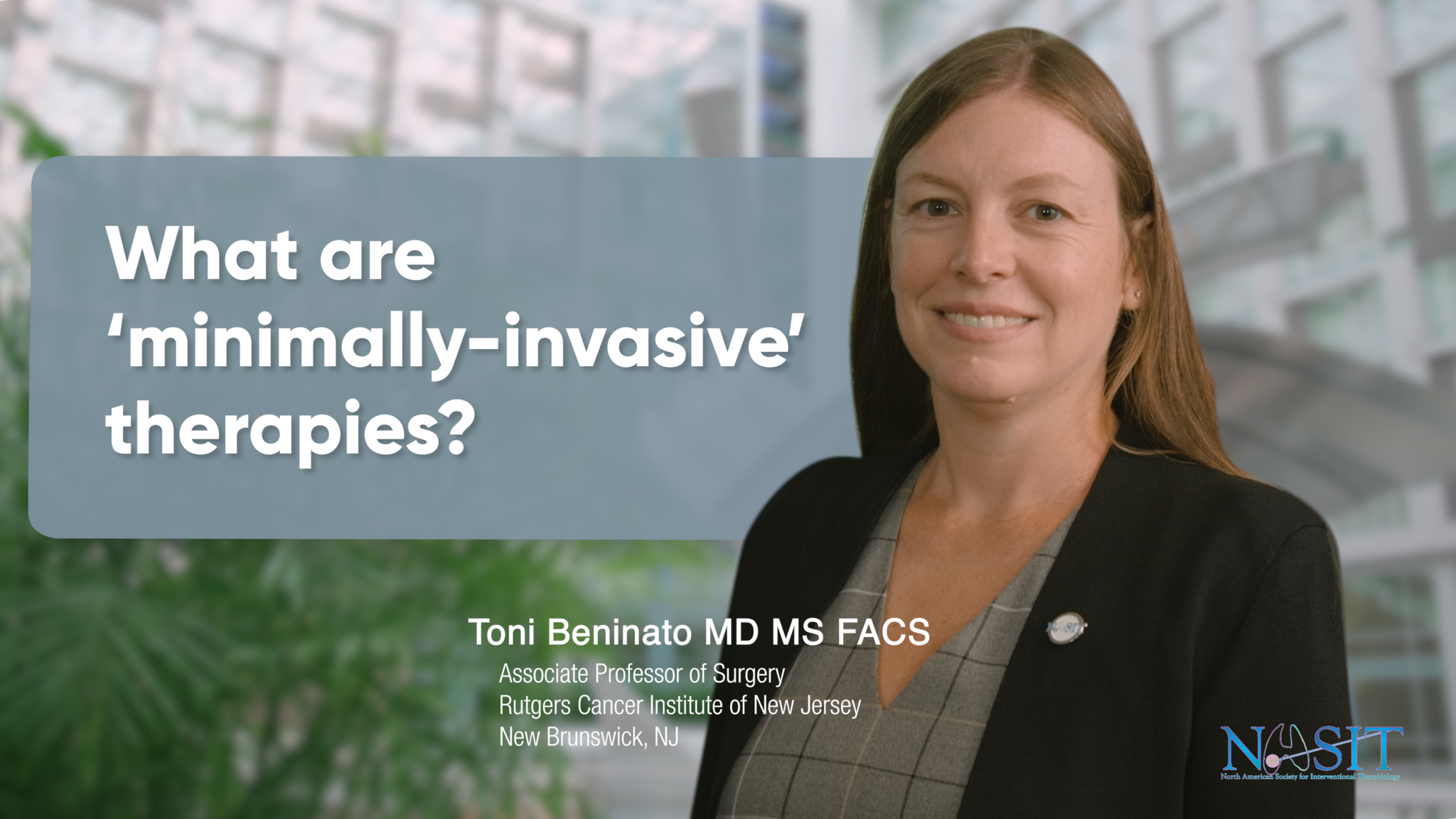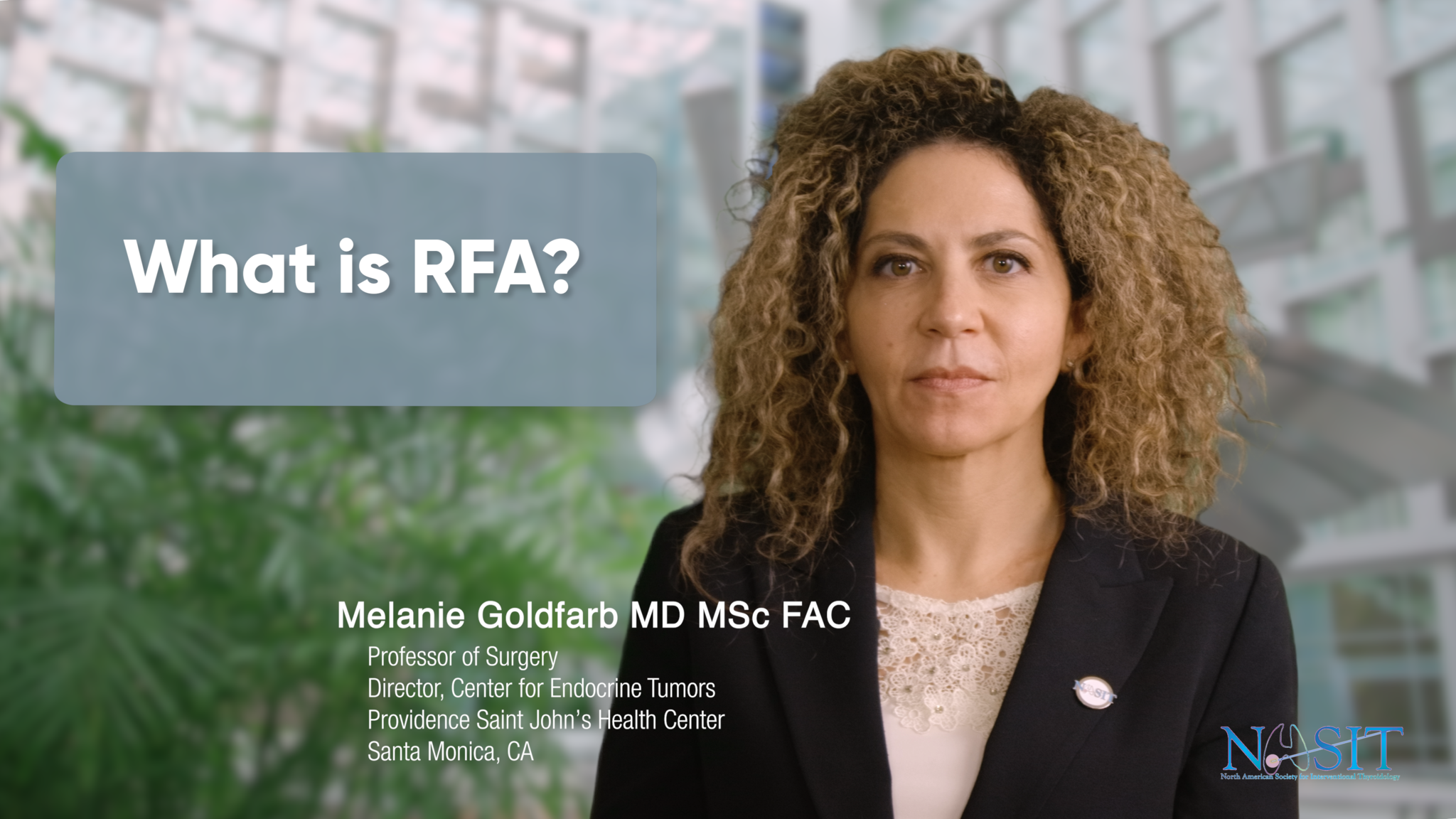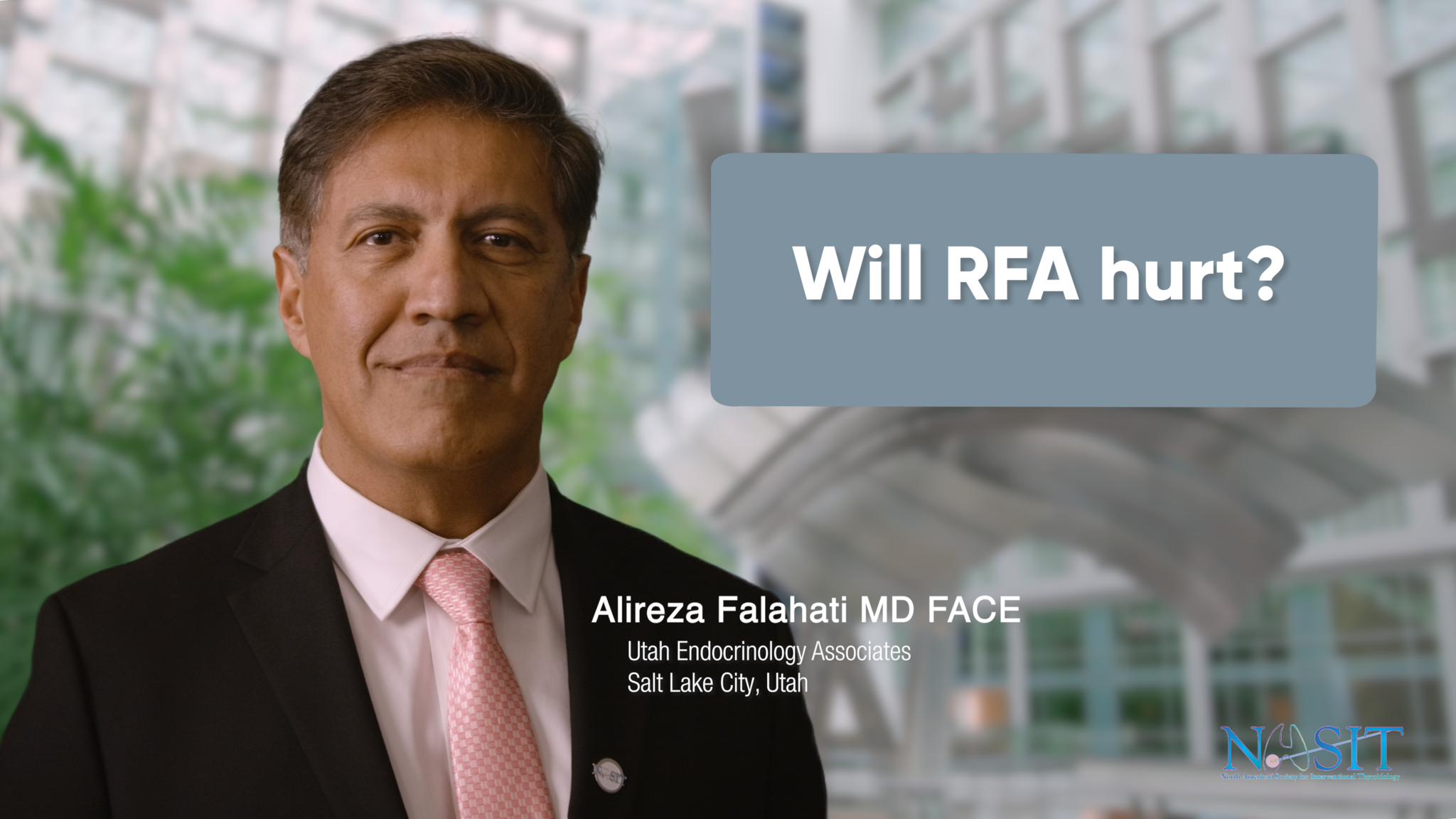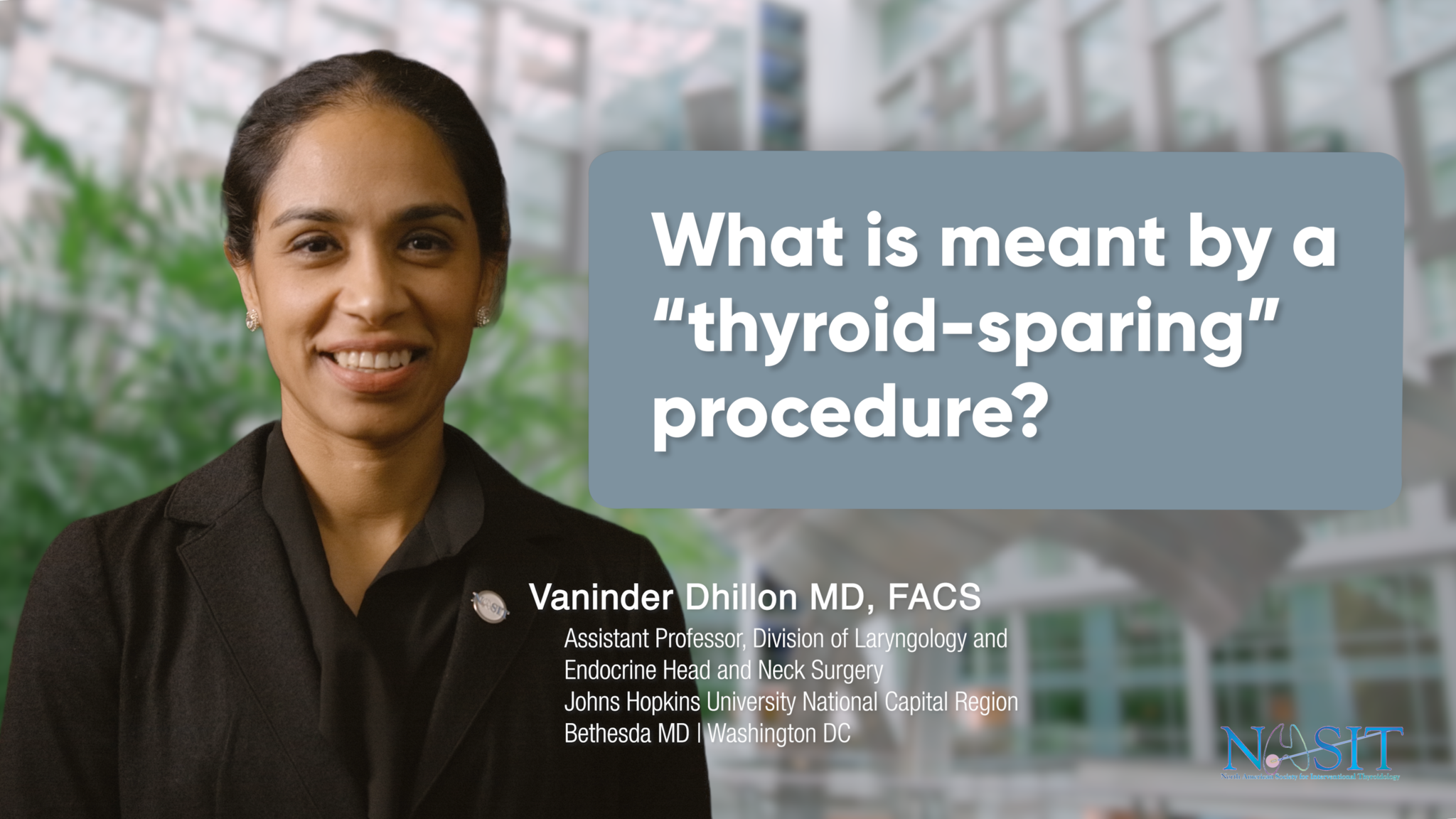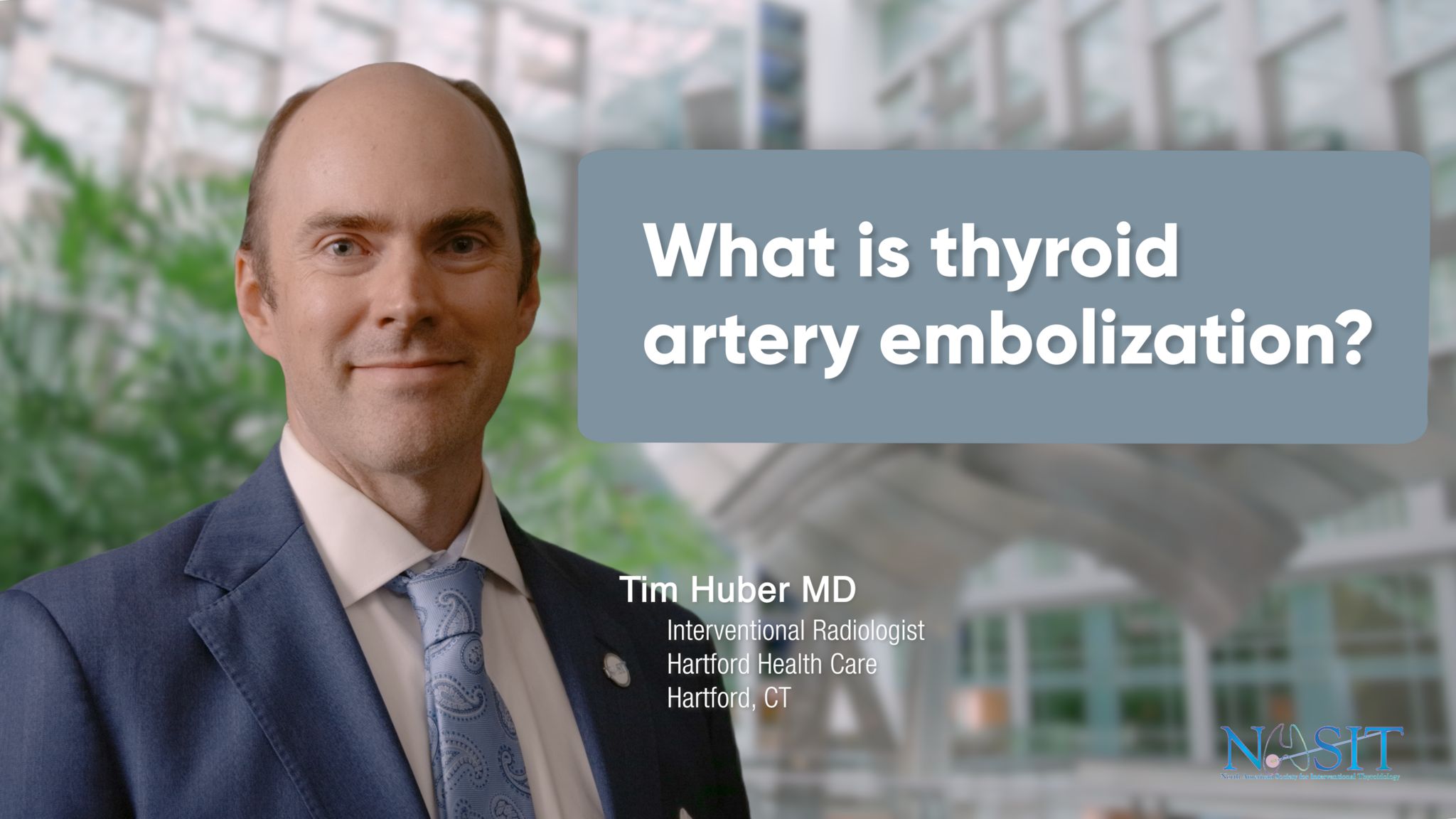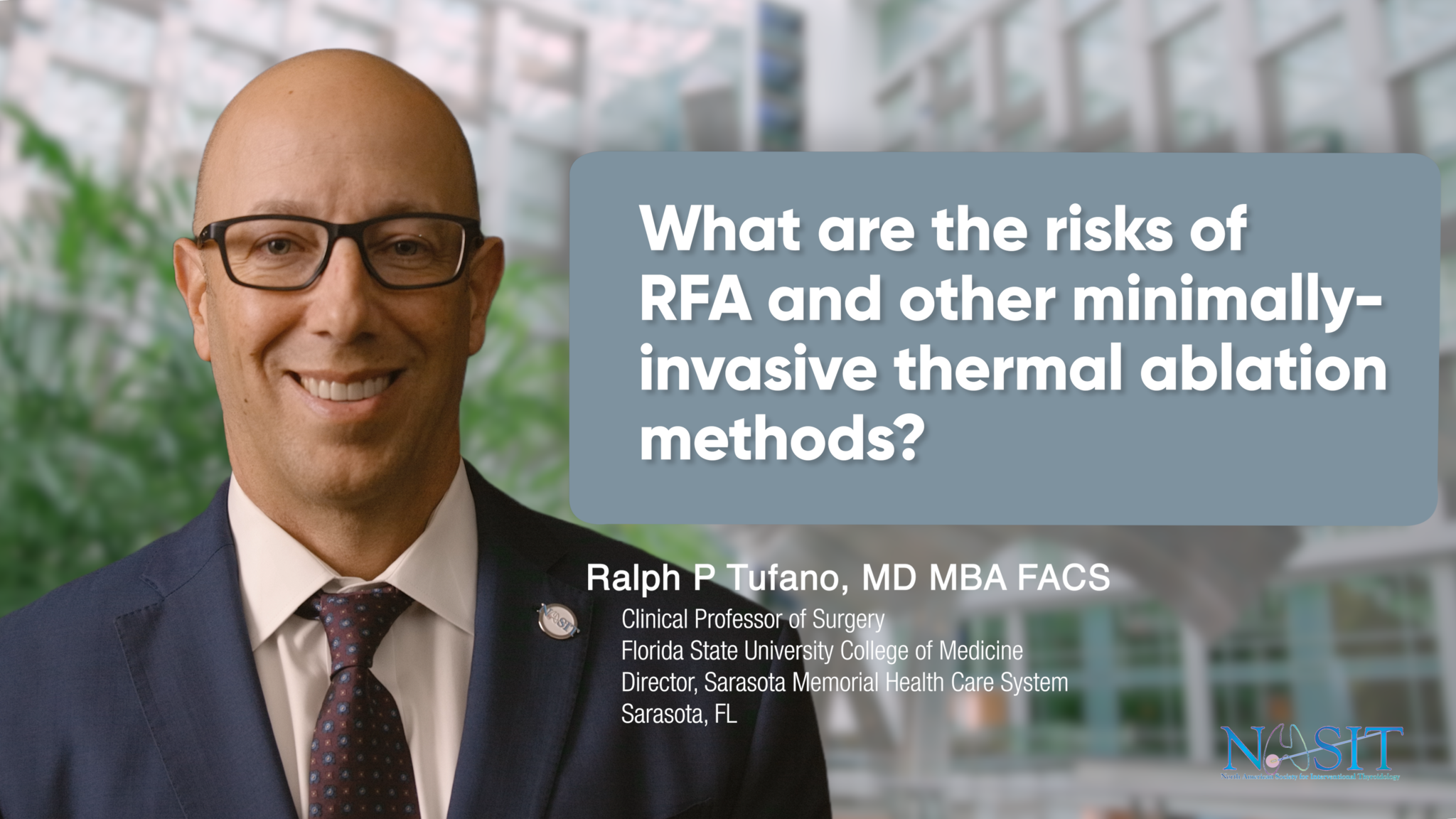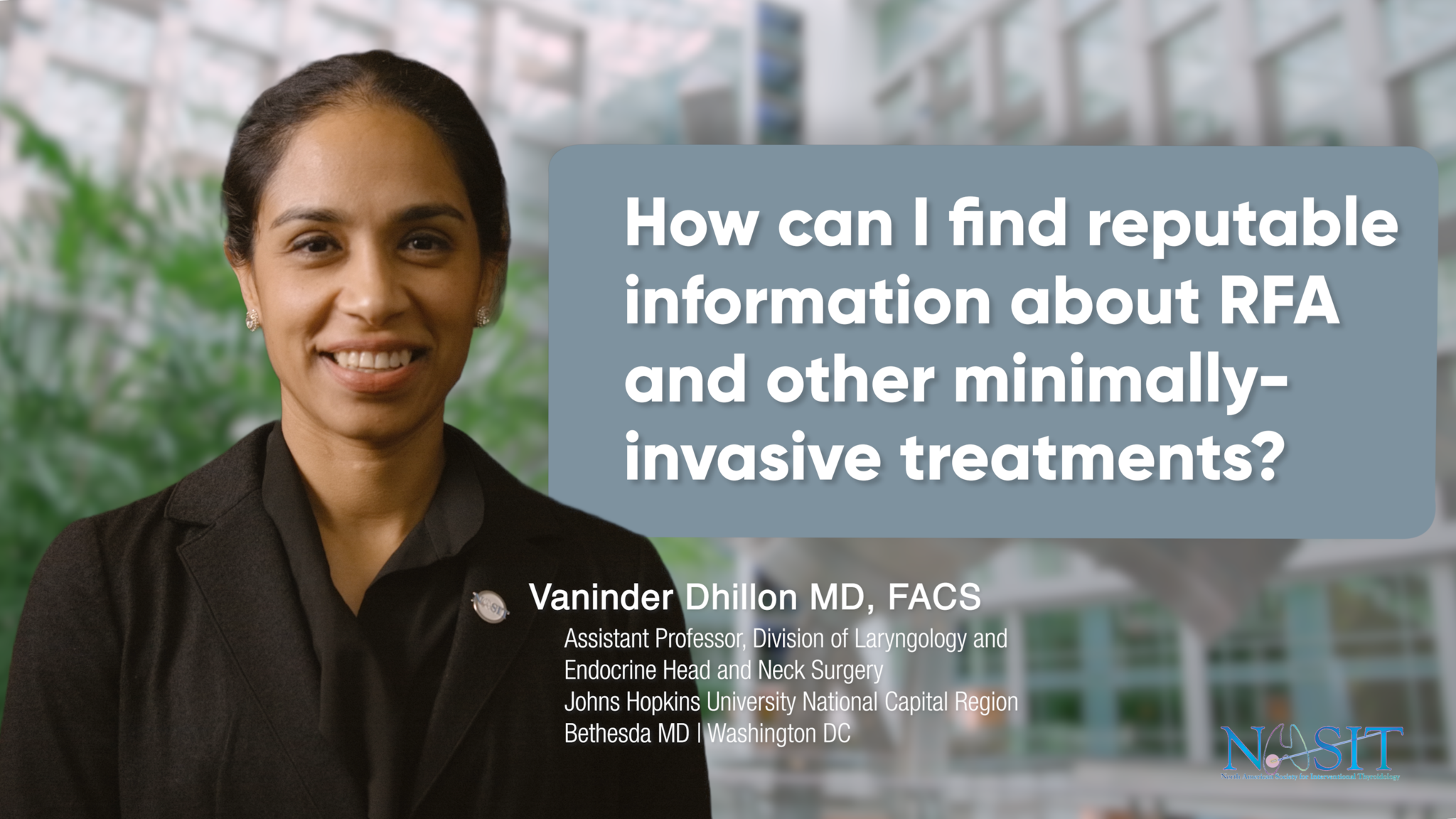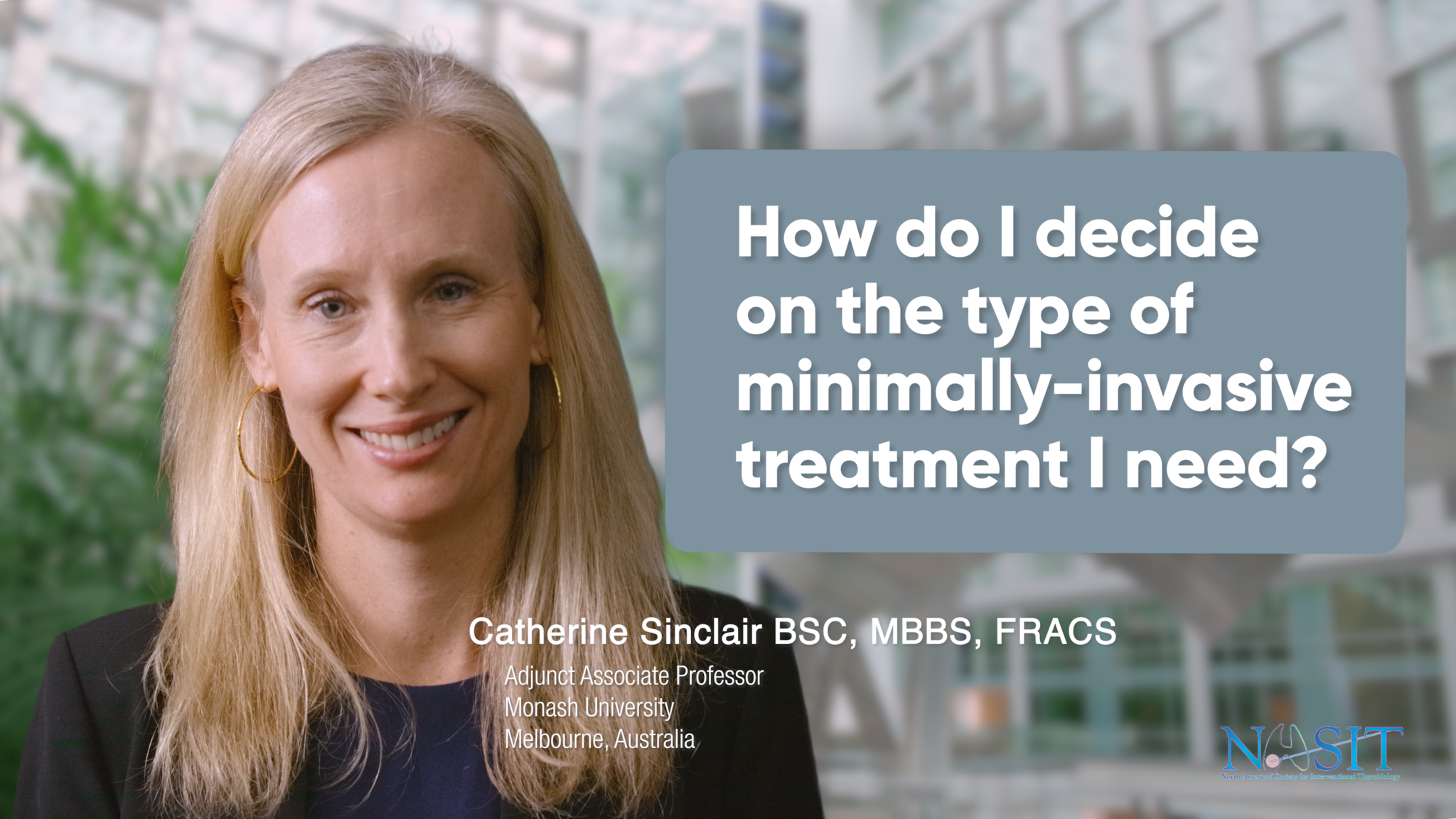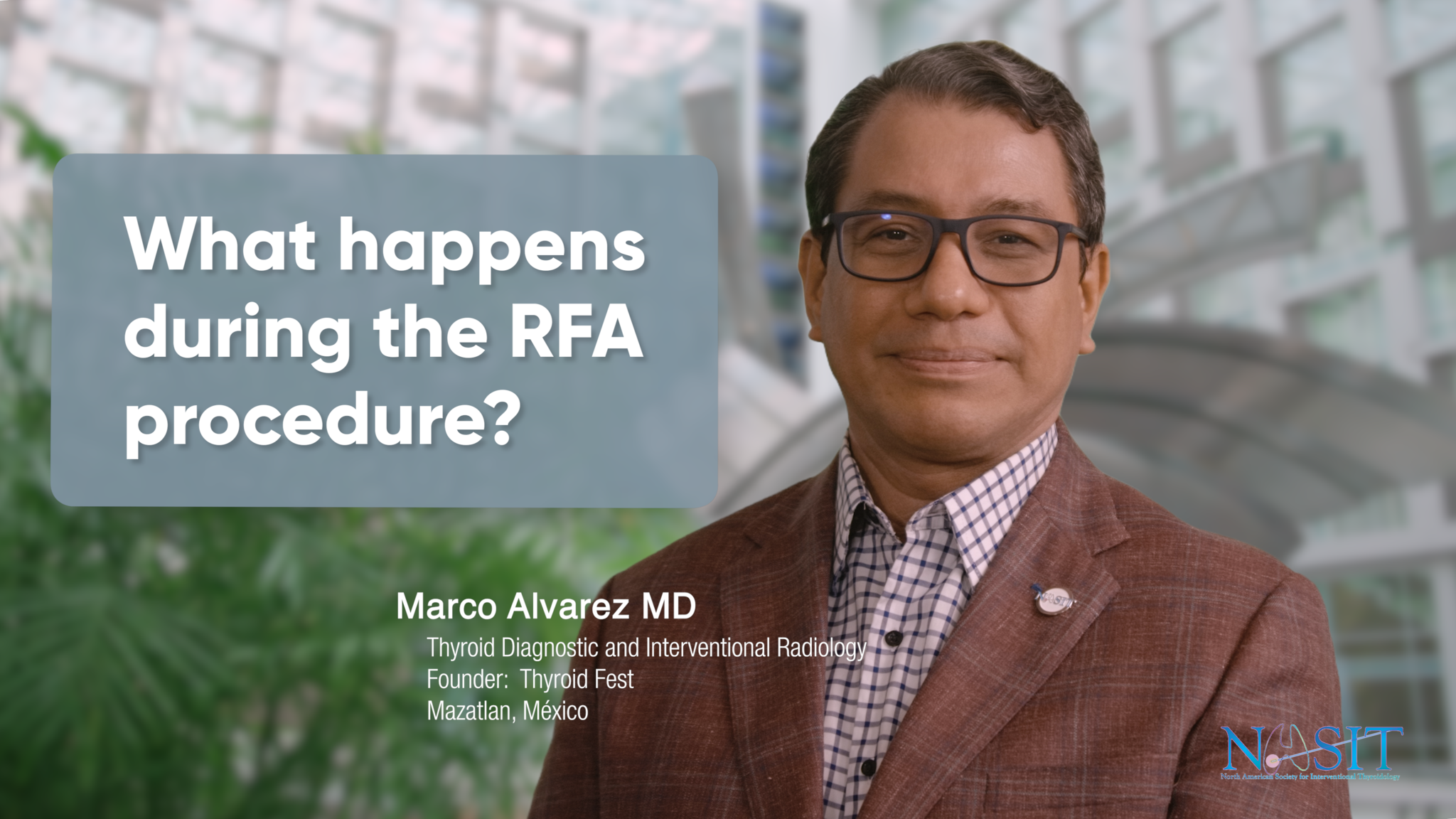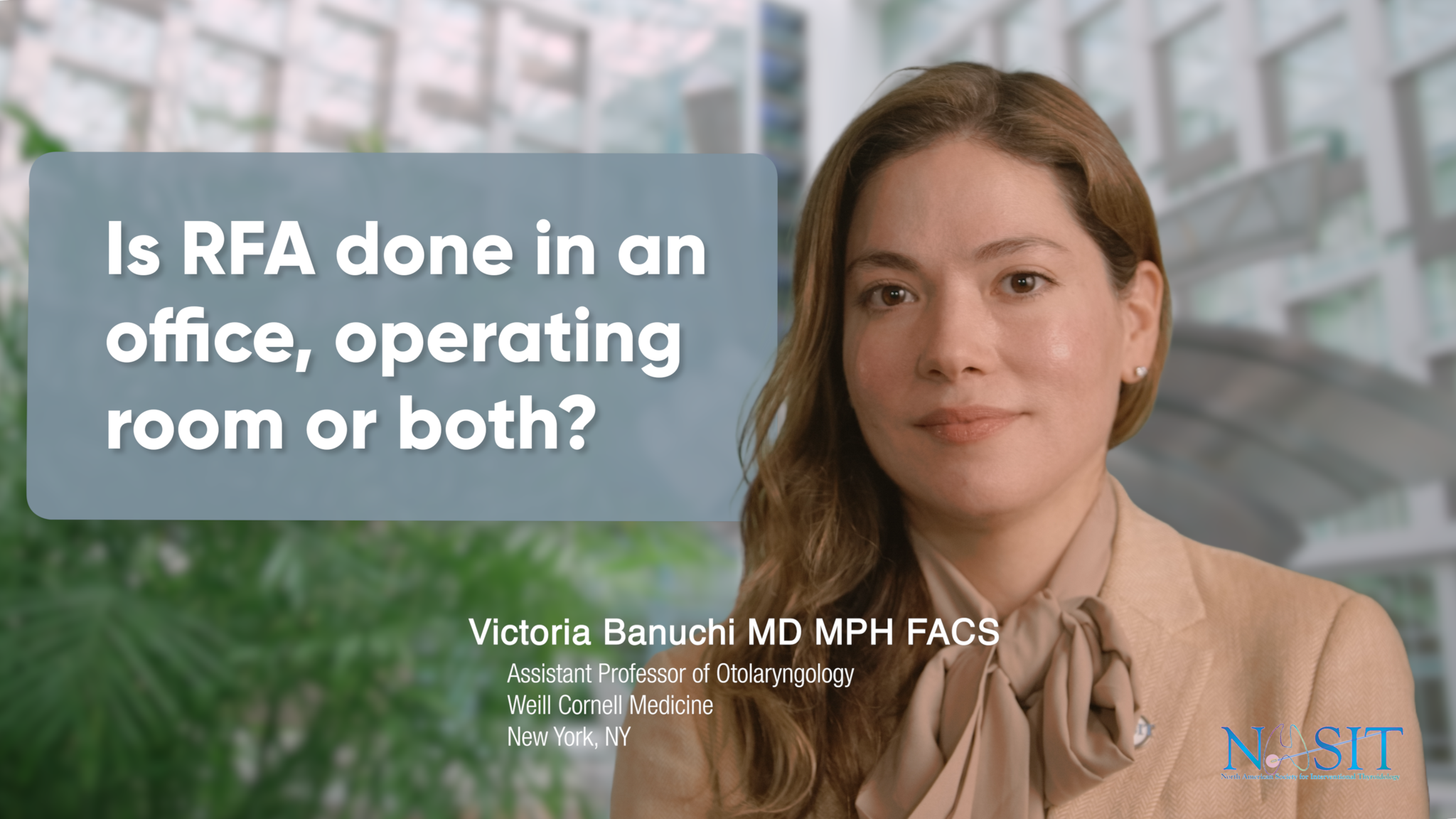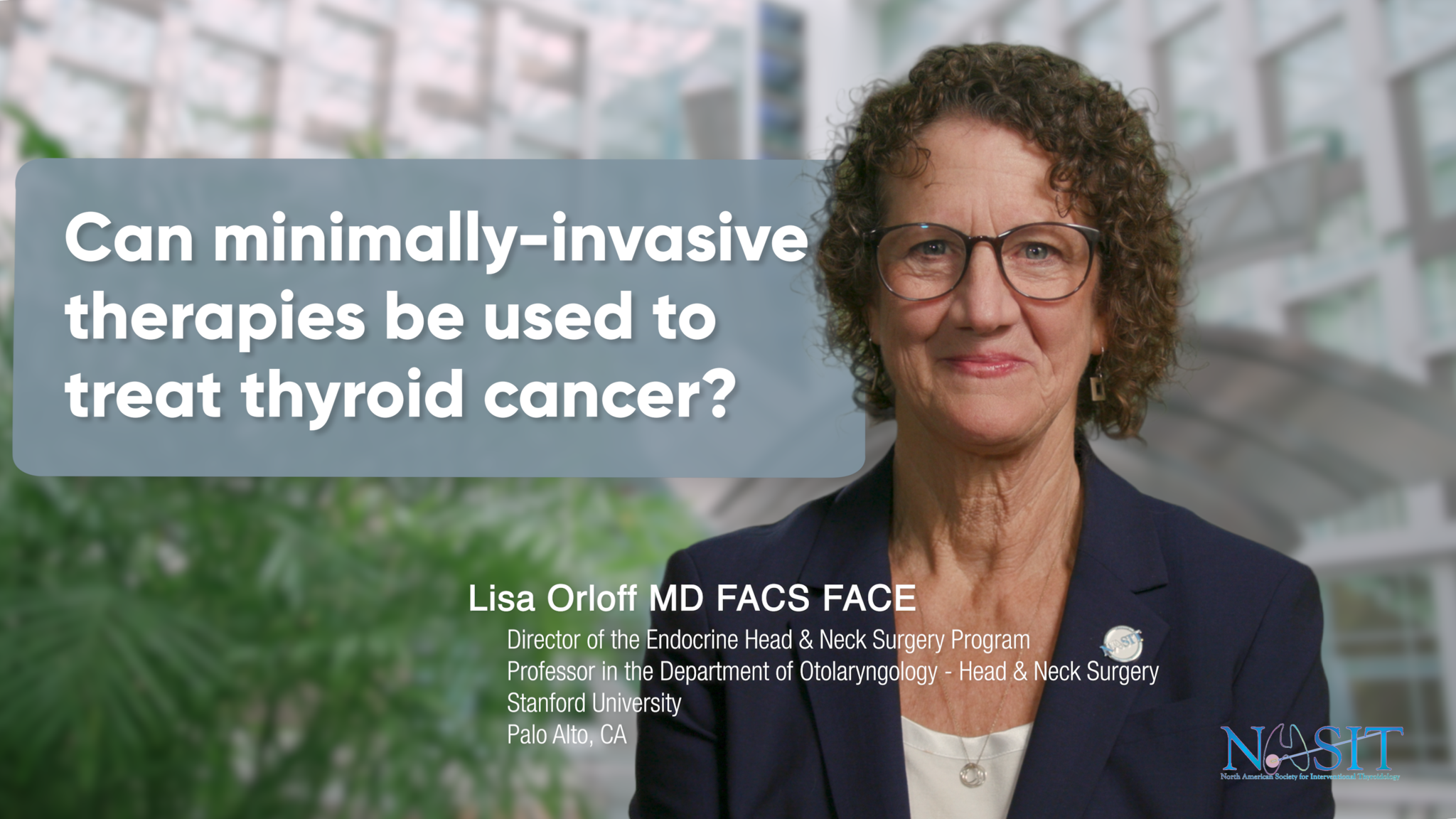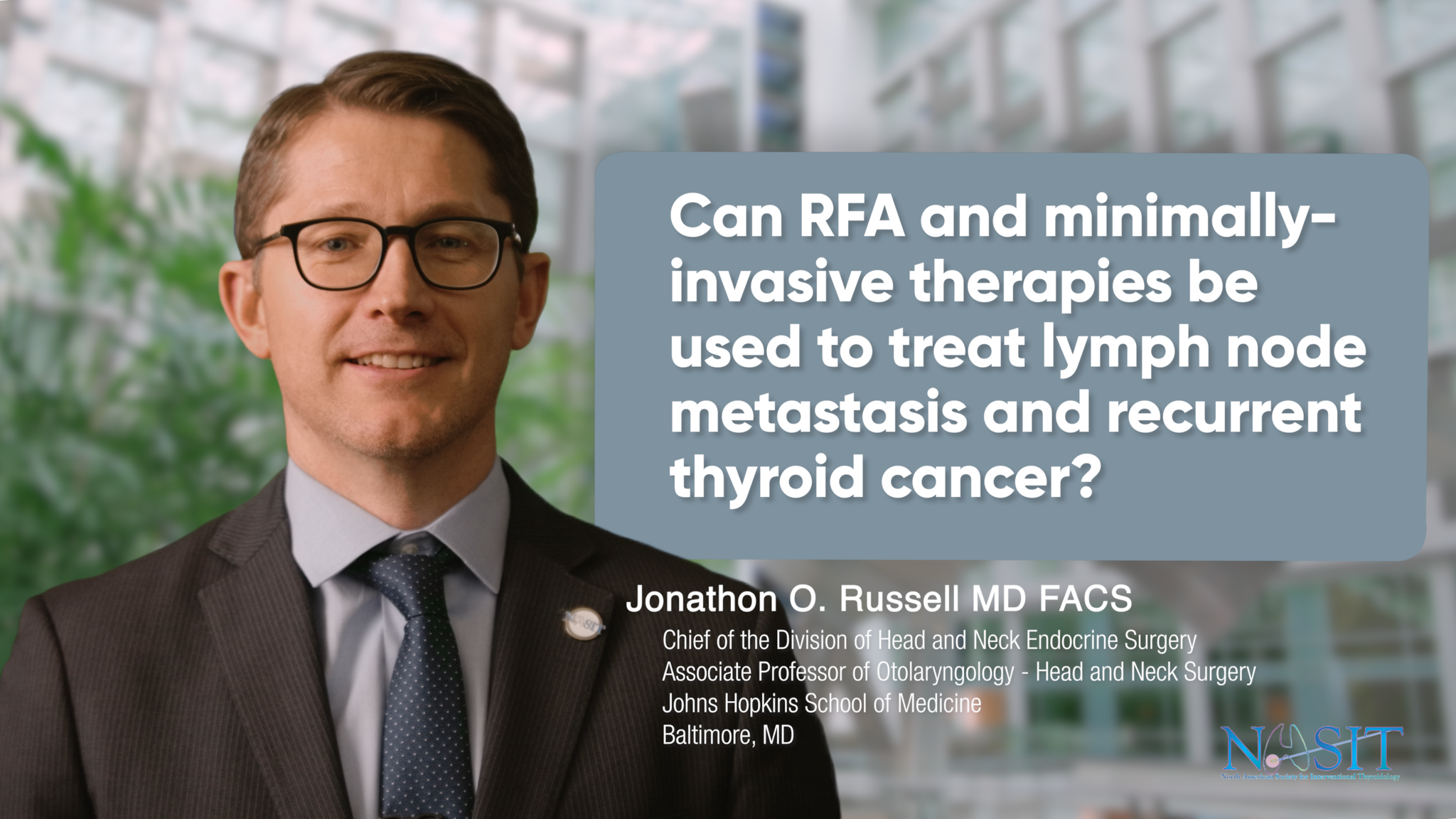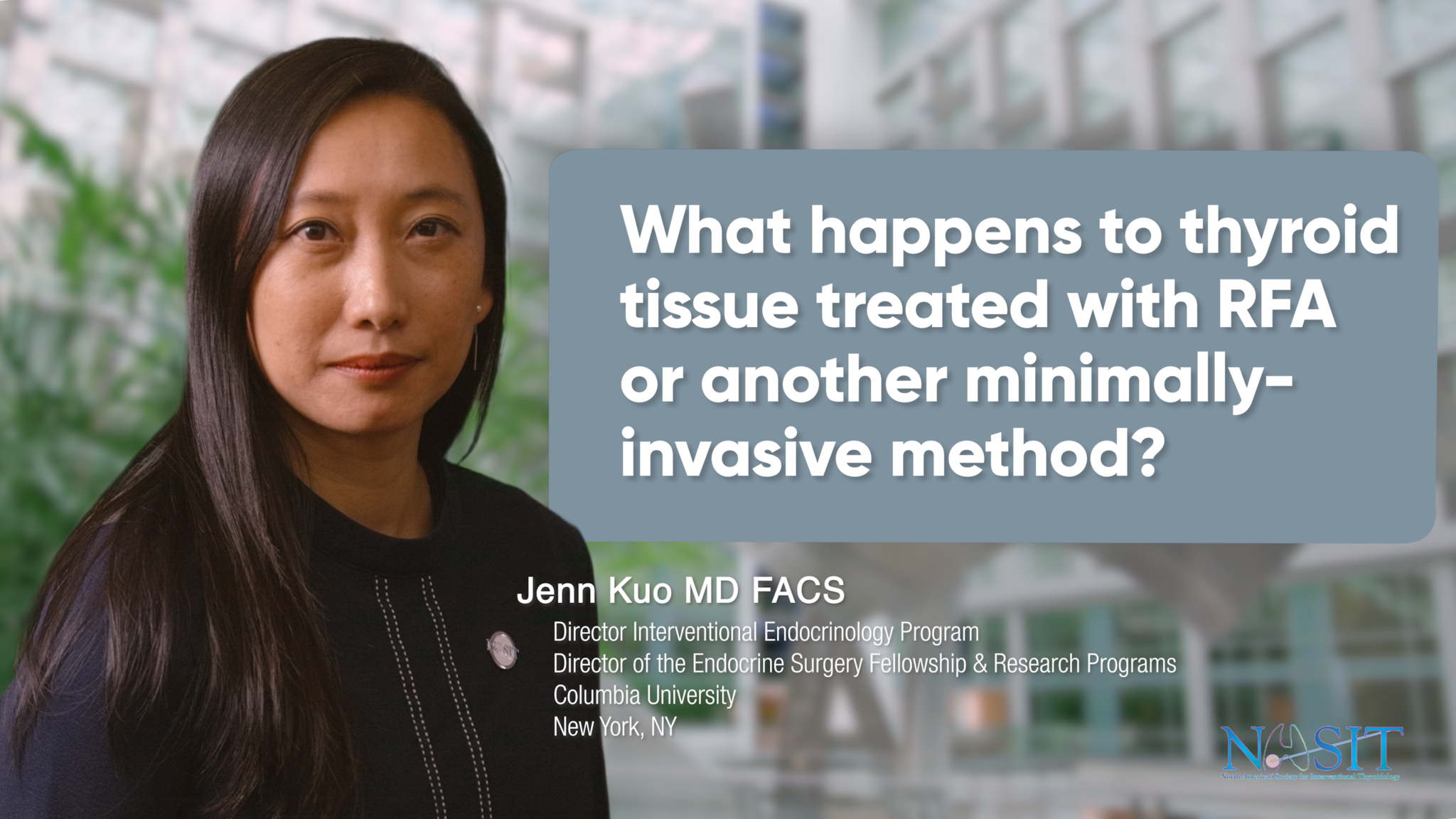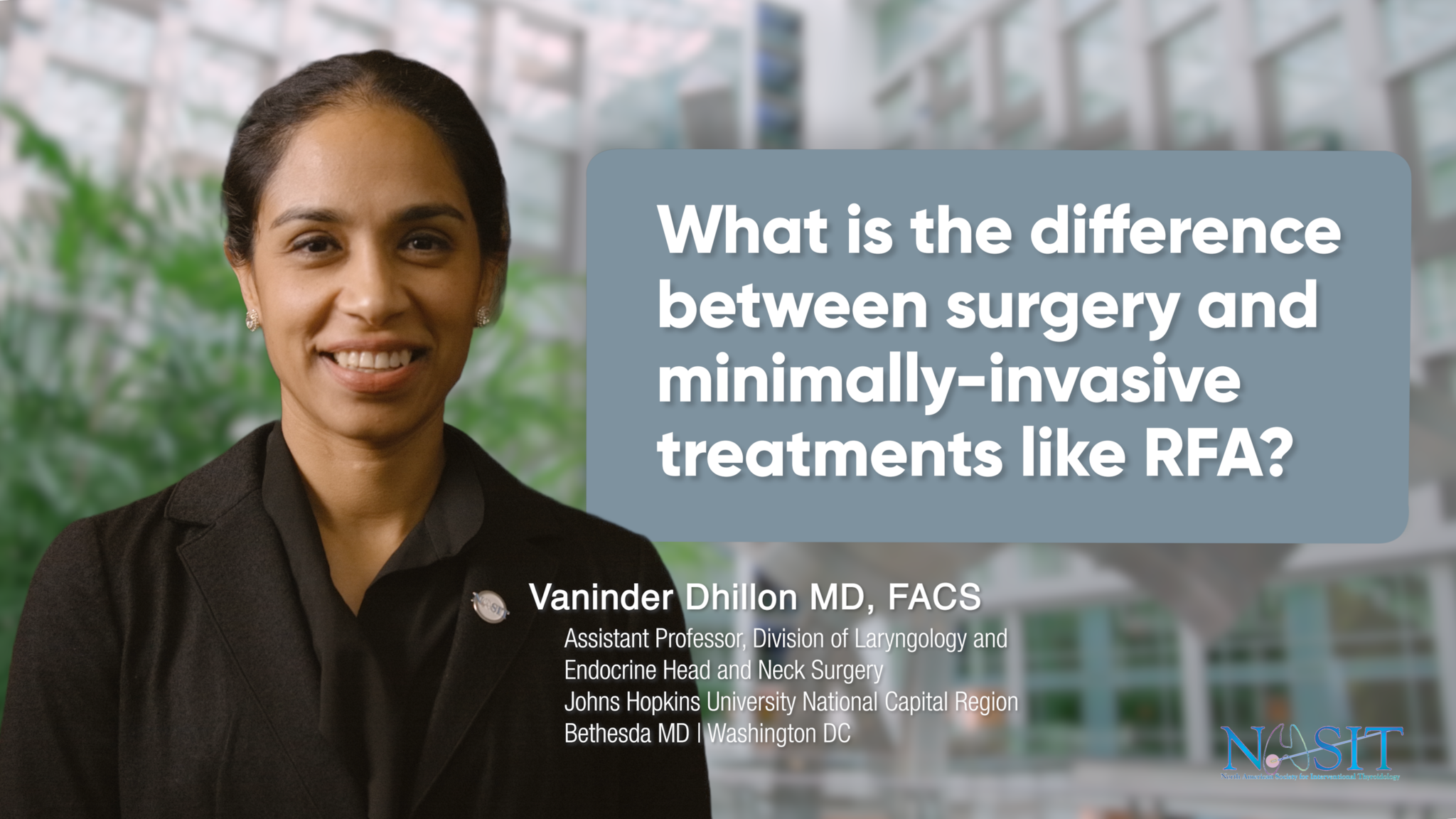Patient Resources
|
Frequently Asked Questions Click on a video thumbnail below to learn more about whether a minimally invasive therapy might be right for you! |
What are 'minimally-invasive' therapies? Radiofrequency, microwave, and laser ablation may be an effective way to treat your thyroid nodule and preserve normal thyroid function. |
Will I require thyroid hormones? How often is thyroid hormone replacement required after thyroid surgery? Can a minimally invasive method preserve your thyroid function? Learn more here! |
What is RFA? Learn more about RFA--the most frequently used and most effective minimally invasive thermal ablation method. |
Will RFA hurt? RFA should be a very well tolerated procedure and discomfort during and after your treatment should be easily managed . Learn more here! |
Will RFA be covered by my insurance? Insurance coverage for RFA should eventually be routine, but until then, costs are likely to be your responsibility. Learn more about insurance coverage here. |
What is meant by a "thyroid-sparing" procedure? Preserving thyroid function is one of the most important advantages of minimally invasive treatments. Learn more here! |
What if my doctor says I'm not a candidate for a minimally-invasive therapy? How to ensure that a minimally invasive treatment is right for you, and what to do if it isn't! |
What is thyroid artery embolization? Thyroid artery embolization is an exciting new minimally invasive treatment option for thyroid goiters and nodules too large for treatment with RFA and other methods. Learn more here! |
What are the risks of RFA? When performed by an expert, RFA and other minimally invasive therapies are safe, but no procedure is ever risk-free. Learn more about potential risks associated with treatment and what to discuss with your treating physician! |
How can I find reputable information about RFA and other minimally-invasive treatments? NASIT is an organization for both patients and physicians. Learn more about what we do, who we are, and why we want to help! |
How do I decide on the type of minimally-invasive treatment I need? Among the minimally invasive treatments, RFA is usually safest and most effective but there are other treatments that work too. Learn more here! |
What kind of thyroid nodules can be treated with minimally-invasive therapies? Learn how minimally invasive methods can be used to treat benign thyroid nodules, hyperfunctioning nodules that cause hyperthyroidism, and even small thyroid cancers. |
What happens during the RFA procedure? Here is a brief overview of how the RFA procedure is performed. Find out more about the step-by-steps right here! |
Is RFA done in an office, operating room or both? RFA is usually done as an outpatient procedure, while you're comfortable and awake! General anesthesia is not usually necessary. Learn more about what to expect during your RFA! |
Can minimally-invasive therapies be used to treat thyroid cancer? Minimally invasive treatment methods may be an effective alternative to surgery for some small thyroid cancers. Learn more here! |
Can RFA and minimally-invasive therapies be used to treat lymph node metastasis and recurrent thyroid cancer? When should a minimally invasive method like RFA be considered for treatment of recurrent thyroid cancer? You can find answers here! |
What kind of results should I expect after RFA or other minimally-invasive therapy?
Volume reduction of 60%-90% is typical at 1 year following a thyroid nodule RFA. Toxic" thyroid nodules that cause hyperthyroidism can also be effectively treated, restoring normal thyroid function. Learn more about what you can expect following treatment. |
How many times can I have RFA or other minimally invasive treatments? Though RFA and other minimally invasive treatments can be repeated, they usually do not need to be! Learn more here! |
Can RFA and other minimally invasive therapies be used to treat hyperthyroidism? RFA and other minimally invasive procedures can eliminate overactive nodules that cause hyperthyroidism and can get you off of anti-thyroid drugs like methimazole and PTU. Learn more here! |
What happens to thyroid tissue treated with RFA or other minimally invasive methods? After RFA or another minimally invasive therapy, your body does the clean up that leads to size reduction and other benefits. Learn more here! |
What kind of follow-up will I need after RFA or other minimally invasive treatments? After RFA or another minimally invasive treatment, you'll need follow up. Learn more about what you'll need to do following your minimally invasive treatment! |

